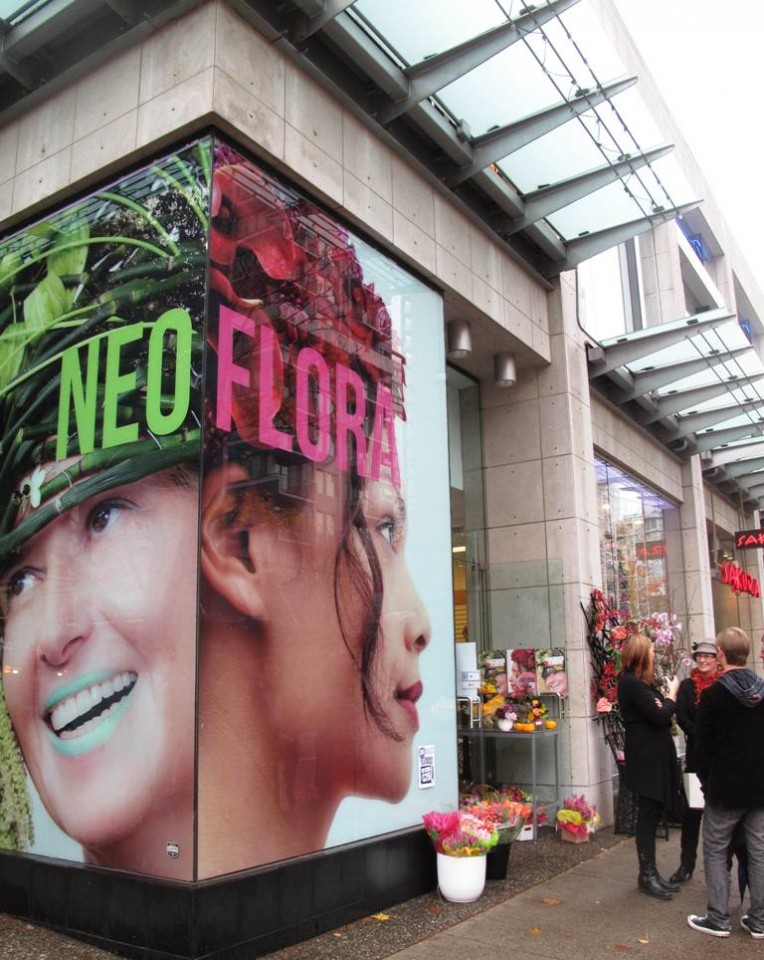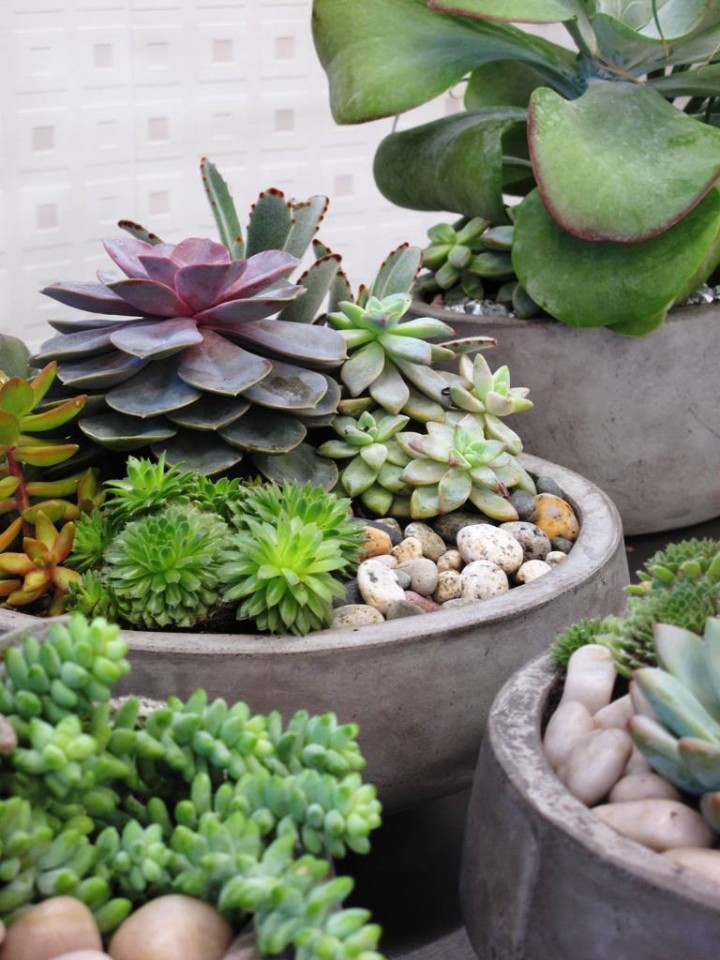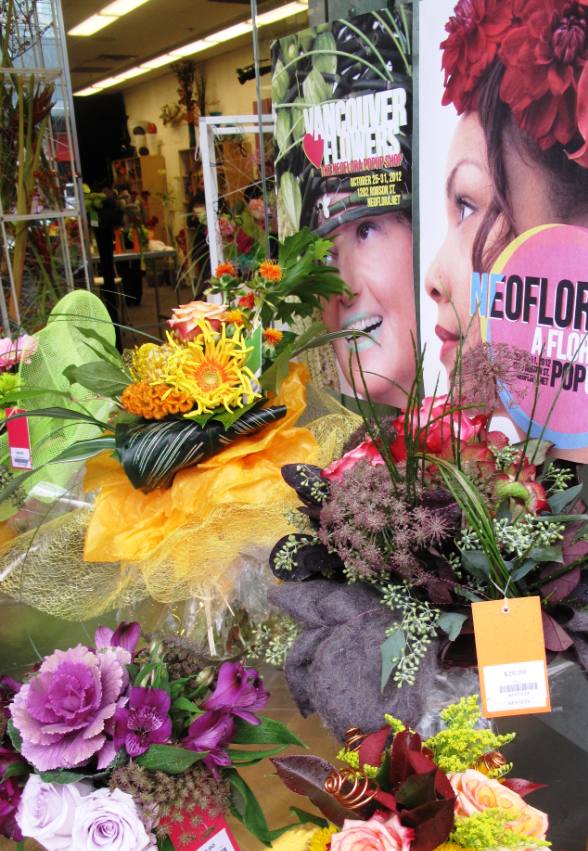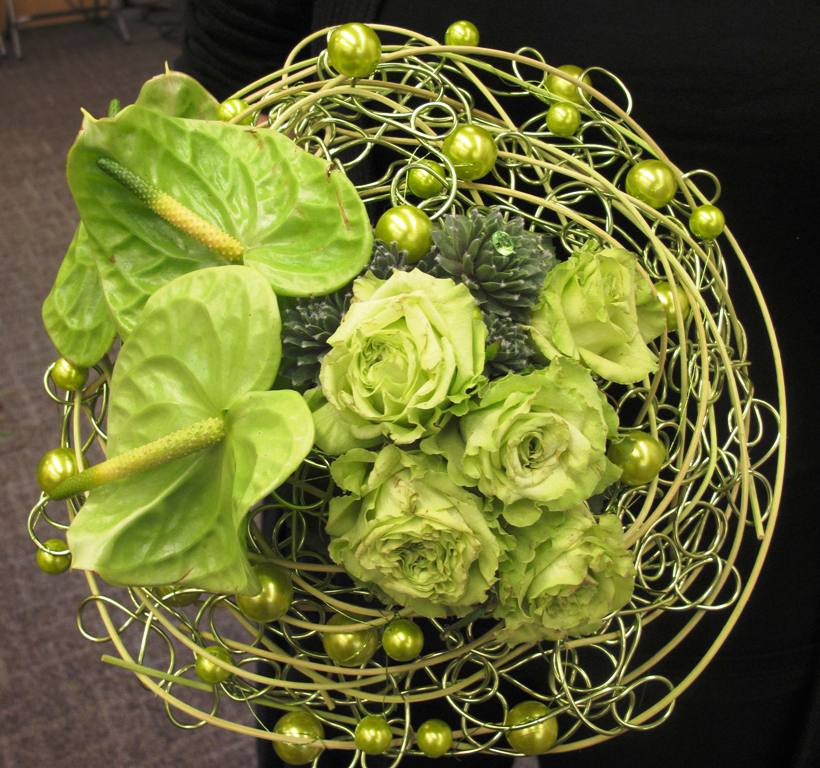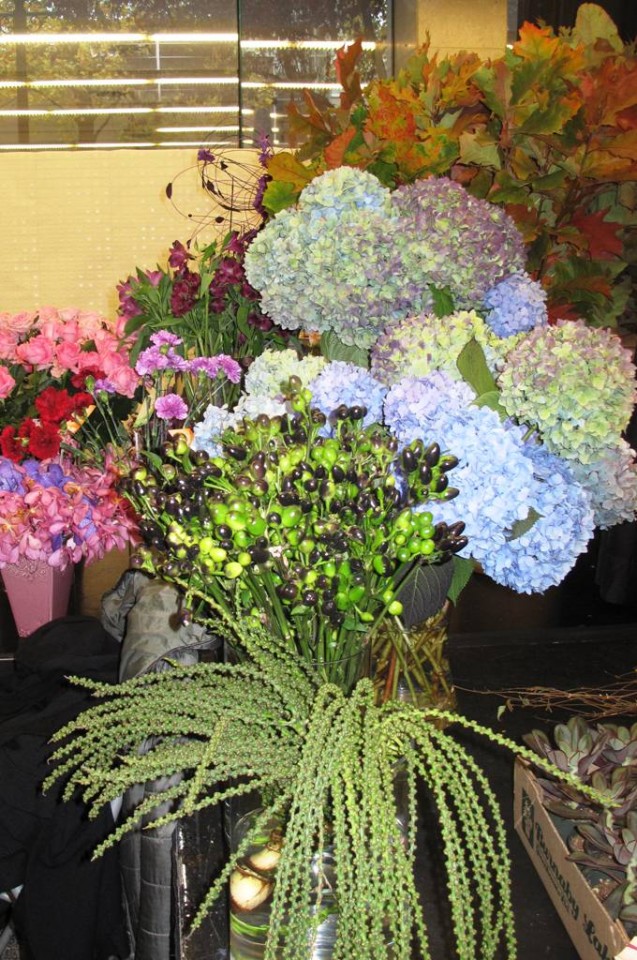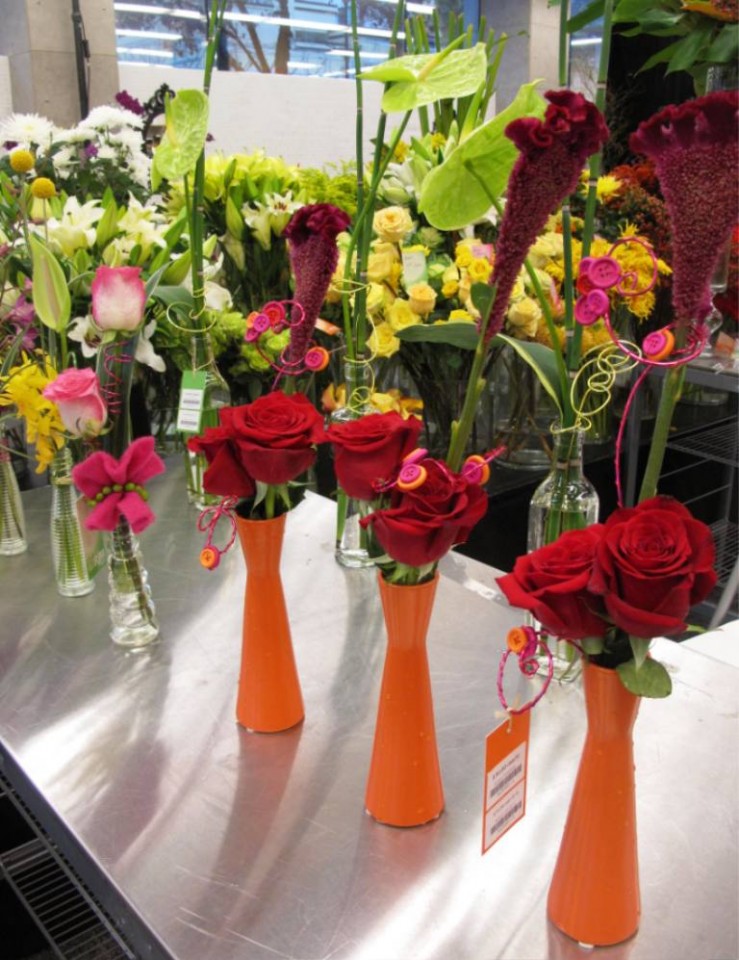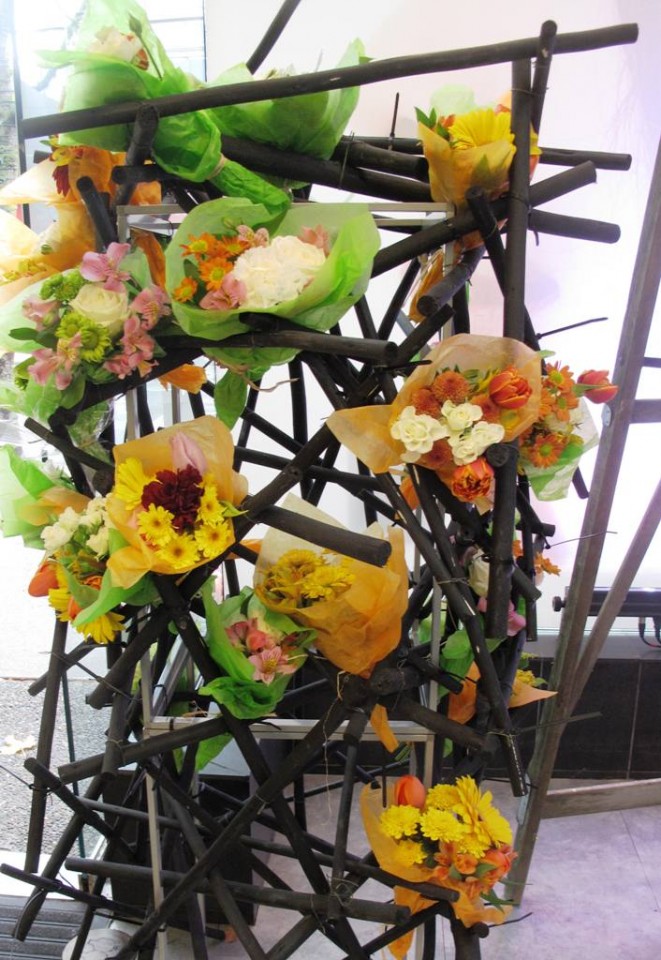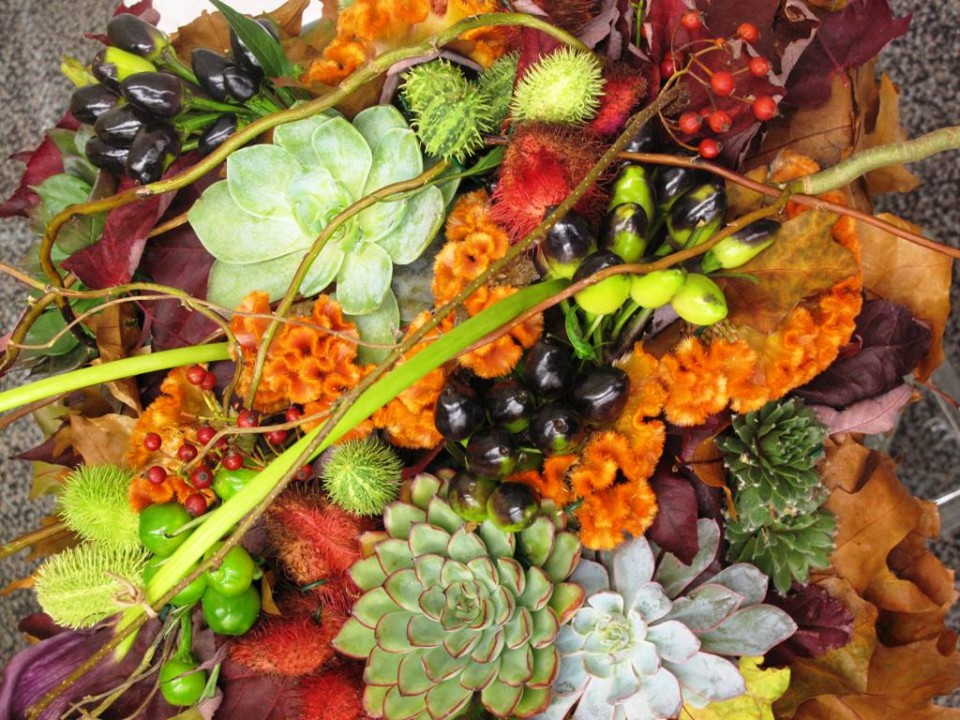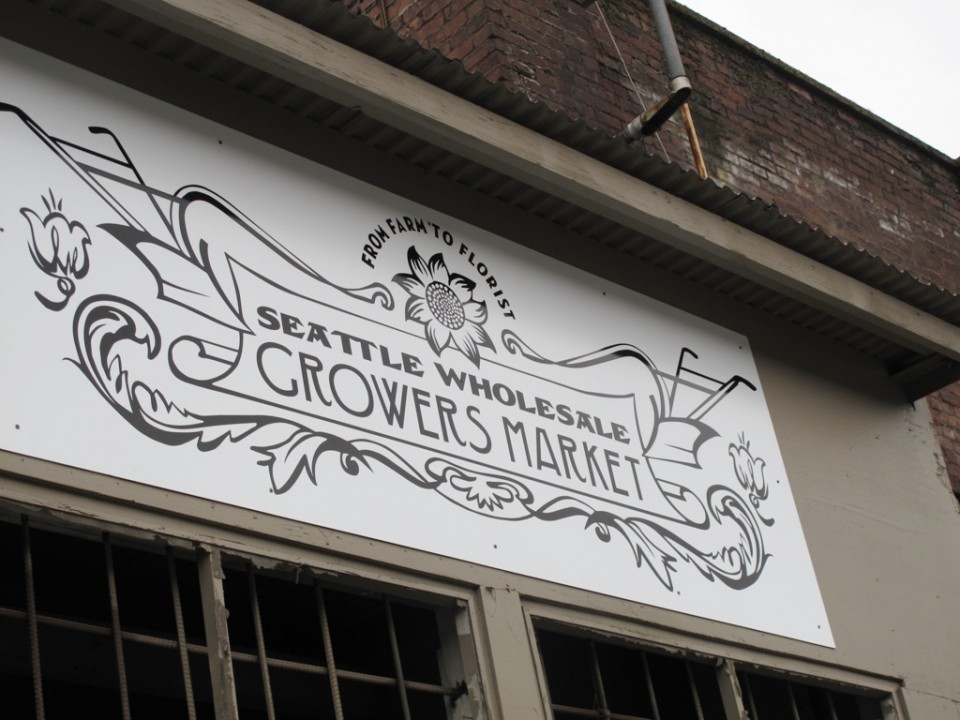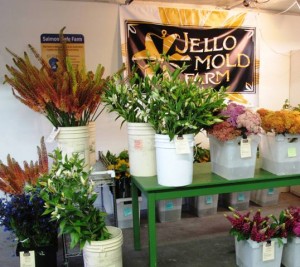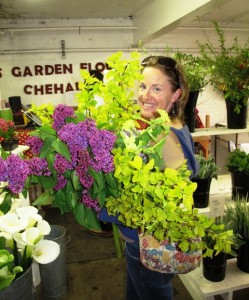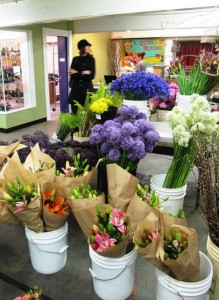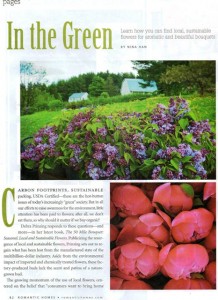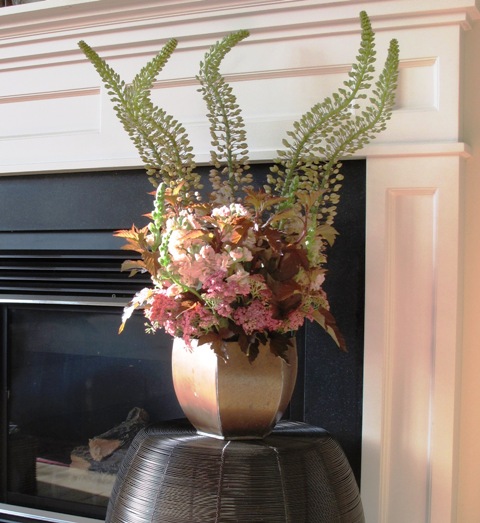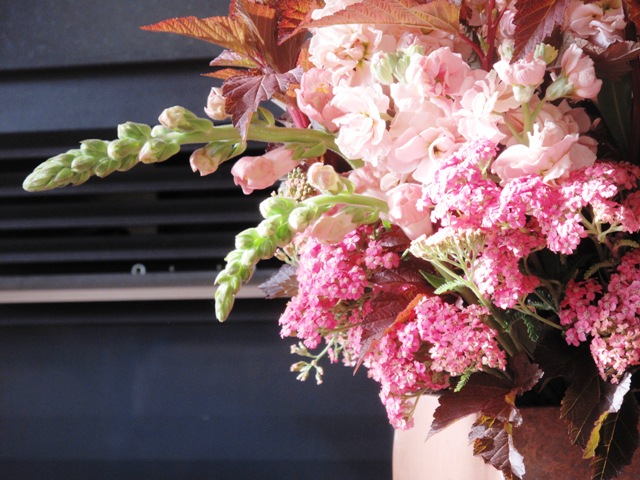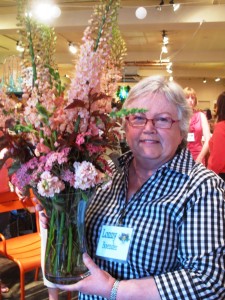They play well together in a vase, don’t they?
When you think about a succulent plant as a floral design ingredient, it’s important to use both its “leaves” and its “flowers.”
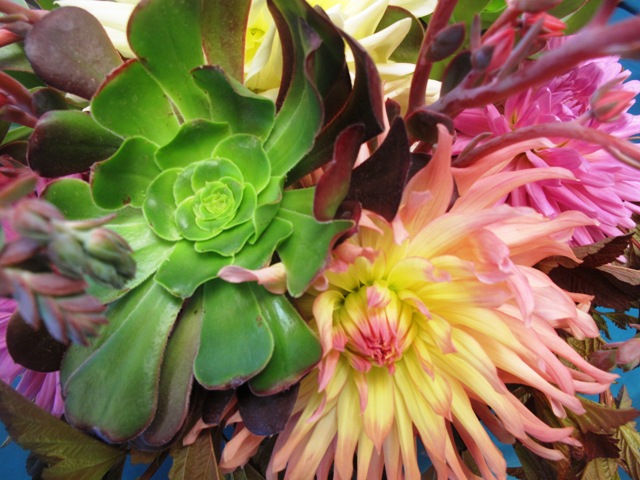
Robin Stockwell, succulent grower extraordinaire and owner of Succulent Gardens Nursery in Castroville, Calif., shared this lesson last Friday as part of our joint workshop, “All in Good Time,” a program of the Garden Conservancy and the Ruth Bancroft Garden in Walnut Creek, Calif.
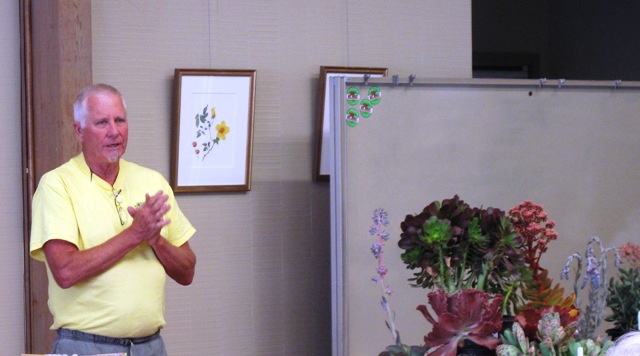
Thanks to the expert planning of Jenny Andrews, Garden Conservancy’s new Education Director, Robin (above) and I teamed up to talk about the Slow Flower movement. We especially focused on the idea of using wonderful, versatile, irresistible succulents from our gardens and pots.
In working on The 50 Mile Bouquet, I was introduced to the succulents-as-cut-ingredients technique. Several of the designers we featured use echeverias, aeoniums, graptopetalums, kalanchoes and other succulent cuttings as deftly as they use dahlias and roses. Susie Nadler and Flora Grubb, of The Cutting Garden at Flora Grubb Nursery, and Baylor Chapman of Lila B. Flowers, are rock stars when it comes to pairing succulents from the garden with flowers from the farm. Together these women inspired Sunset’s senior garden editor Julie Chai to use her succulent cuttings for the bridal party bouquets and centerpieces at her July 2011 wedding, also featured in our book.

Robin, though, was way ahead of all of us! A true pioneer, he was making bouquets of succulent flowers back in the 1980s. He shared a photo from a 1981 (black-and-white photographed) Sunset magazine article in which his then-young son was pictured with a vase of tall echeveria blooms. Let’s just call Robin an early-early-adopter to the succulent craze. He was so far ahead of his time that it has taken the rest of us 30 years to catch up!
“Succulents are the conservationists of the plant world” — Robin Stockwell
At the Garden Conservancy workshop, I started out the day with an illustrated talk called “10 Lessons I learned from the Slow Flower Movement.” Robin then wowed the audience with insights about how to harvest and what to do with each type of succulent. He explained that the rosette-looking succulents are actually leaves; many of the plants do produce long, slender stems bearing tiny pink flowers that dangle from them — also quite enticing.
I came prepared to carefully wire the rosettes and wrap their “faux stems” with green florist tape, but Robin demonstrated how you can cut the stem long enough to practically eliminate the wire. Play around with it and you’ll see what I mean. If the stem of the echeveria is 3-4 inches long, that might be enough to anchor it into a flower arrangement – cuz it certainly doesn’t need water to look dazzling (in fact, it will last far longer than any of the perennials or annuals in that vase). Kathleen Williford of the California Cut Flower Commission helped tremendously by gathering floral ingredients from local Monterey Bay area growers who supported the workshop with their donations. We couldn’t have done this without them!
BOUQUET 1
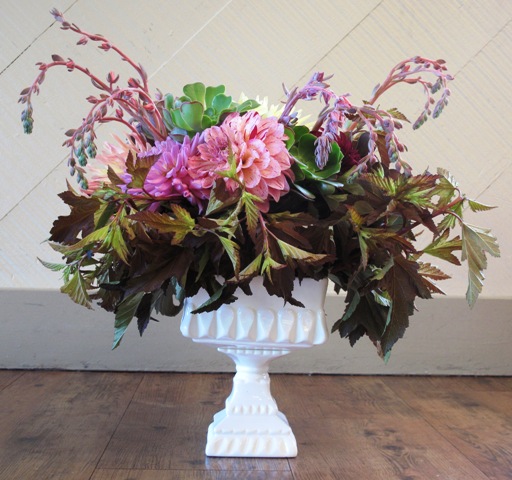
My go-to vase for stunning arrangements is a 7-inch tall white ceramic pedestal dish. It’s square and probably originally intended for serving some kind of yummy dessert. It’s also the type of vessel that a conventional florist would fill with Oasis by shoving a cube of the toxic green foam into the base and then poking in stems to create a “full” arrangement. But instead, I used a mound of chicken wire, anchored with a reusable floral clay. Here are the steps:
1. Level one of the arrangement is to fill the entire surface of chicken wire with foliage, allowing it to drape over the edge of the vase and also create a soft dome of texture. I had brought some foliage along with me on the plane from Seattle to Oakland ~ Jello Mold Farm’s Physocarpus, called ‘Coppertina’ – which has a tawny hue that plays off the brighter dahlias and succulents.
2. Level two: Add dahlias in a grid of one at the center and five surrounding flowers. I cut the dahlia stems relatively short so that the flowers nestled low into the foliage. Thank you to Kevin Larkin of Corralitos Dahlias for supplying the gorgeous blooms!
3. Next, add 4-5 medium-sized aeoniums or echeverias between the dahlia blooms. The ones Robin gave me had 6-inch stems, but I still inserted a short piece of 12-gauge wire into the base of each to “extend” it for anchoring into the chicken wire. Susie Nadler cuts her succulent stems pretty short – about 1/2-inch – and then inserts wire and wraps the entire “stem” with floral tape, but I skipped this step here.
4. Final step: We needed some height! Imagine my reaction when Robin showed up with dozens of cut flowering stems from his hybrid echeverias. Dusky pink, dark coral, pale turquoise. . . the palette was dreamy! Robin’s hybrid echeverias produce mega-rosettes measuring up to 12-inches across, so no surprise that their flowers are also overly robust. The ones he brought me were 10-12 inches long. I inserted several into the bouquet, through the top and down between the other ingredients to be supported by the hidden chicken wire. The hover above the rest of the flowers to finish off the design with a wow-factor!
BOUQUET 2
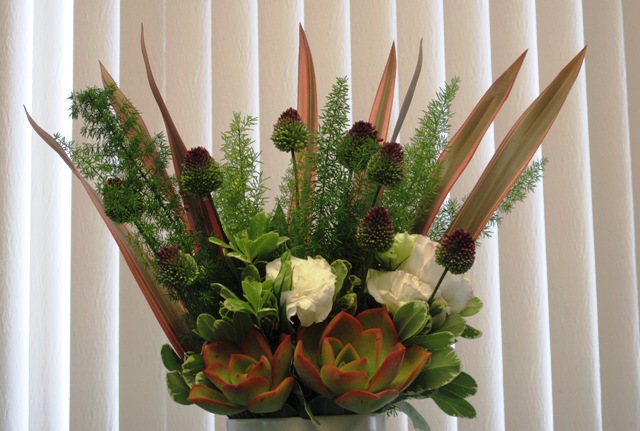
Carol Maerzke, my host for the visit, let me borrow her creamy-white vase for this arrangement. When your vase has upright or slightly fluted sides and a relatively narrow opening (6-7 inches), you don’t need to use a flower frog or chicken wire to stabilize stems. The ingredients behave nicely in this sort of vase. Here are the steps:
1. Fill the vase with varying heights of Asparagus fern, approximately one dozen. These are super-long-lasting and came from California Floral Greens (thanks, Jennifer Everett for the donation!)
2. Add shorter lengths of variegated pittosporum to offset the green and blend with the vase. Carol donated these from her lovely garden in Walnut Creek. I arranged most of these around the rim of the vase, covering the lip.
3. Insert several stems of beautiful white Lisianthus, to add a soft floral component. These were donated by Robert Kitayama of Kitayama Brothers Farms in Watsonville, Calif. Thanks, Robert!
4. Add two variegated succulent echeverias in the front of the arrangement, also draped over the rim of the vase. Thanks, Robin!
5. Add more upright elements for contrast in color, form and texture. Here, I inserted rose-streaked New Zealand flax (Phormium) from California Floral Greens and drumstick alliums grown by Jan Roozen of Choice Bulb Co., in Mount Vernon, Wash.
We had a great day, all around. What struck me later was a note Robin sent by email:
I’ve not thought a lot about the floral side of what I do over the past few years and even when I have, it was in bits and pieces. the presentation with you brought back a much more comprehensive memory of my past experiences and gave me quite a few new insights as well.
It was a great combination of two Slow Flowers points of view, and we were especially energized by the very engaged and supportive audience, as well as the great staff at the Garden Conservancy and the Ruth Bancroft Garden, especially Sophie Damerel, the education director there. A special thanks goes to Jenny Andrews, the Garden Conservancy’s new director of education and a longtime friend and former editor of mine from Garden Design magazine. She made this all work on her end and we couldn’t be happier with the results!
Robin Stockwell’s Succulent Tips for Floral Designers
1. Cut the “heads” off of plants using a clean, sharp florist’s knife or clippers. Robin sterilizes his tools in Lysol.
2. While succulents do not need much water, the aeoniums benefit from being in a little water when cut. Other succulent rosettes will be okay on a wire stem out of water. Obviously, after seven days or so in a vase, the succulent will be the last attractive element left. You’ll be able to re-use it in the next arrangement or let it produce some roots and replant it in a pot or the garden.
3. Soil mix. When replanting your succulent, use a soil mix formulated for cactus and succulent plants. Succulents appreciate soil that is well aerated and drains well. Coarse bark or crushed lava work well for this, sand does not. When I first started writing about succulent bowls, I interviewed Erin Keosian Taylor of botanik in Summerland, Calif., near Santa Barbara. Erin recommends planting rooted succulents in a mix of one-half organic potting soil and one-half cactus mix. I’ve had pretty good success with that recipe.
Repurposed Succulents
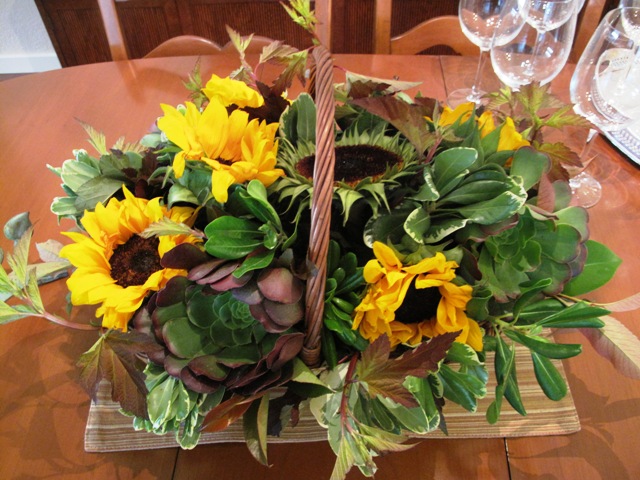
As a footnote, here’s what Carol did after we returned to her home Friday afternoon. The arrangements sat in her car for a little too long, so Carol took my bouquet apart and re-used the ingredients in a centerpiece with locally-grown sunflowers. I think the green aeonium rosettes look stunning with her sunflowers, don’t you?
Tagged as:
Baylor Chapman,
California Cut Flower Commission,
California Floral Greens,
choice bulb co.,
Debra Prinzing,
Flora Grubb,
Flora Grubb Nursery,
floral design,
Garden Conservancy,
Jan Roozen,
Jello Mold Farm,
Jennifer Everett,
Julie Chai,
Kitayama Brothers Farms,
lectures,
Lila B. Floral and Event Design,
Robert Kitayama,
Robin Stockwell,
Ruth Bancroft Garden,
Sophie Damerel,
Succulent Gardens Nursery,
Sunset Magazine,
Susie Nadler,
The 50 Mile Bouquet,
The Cutting Garden
